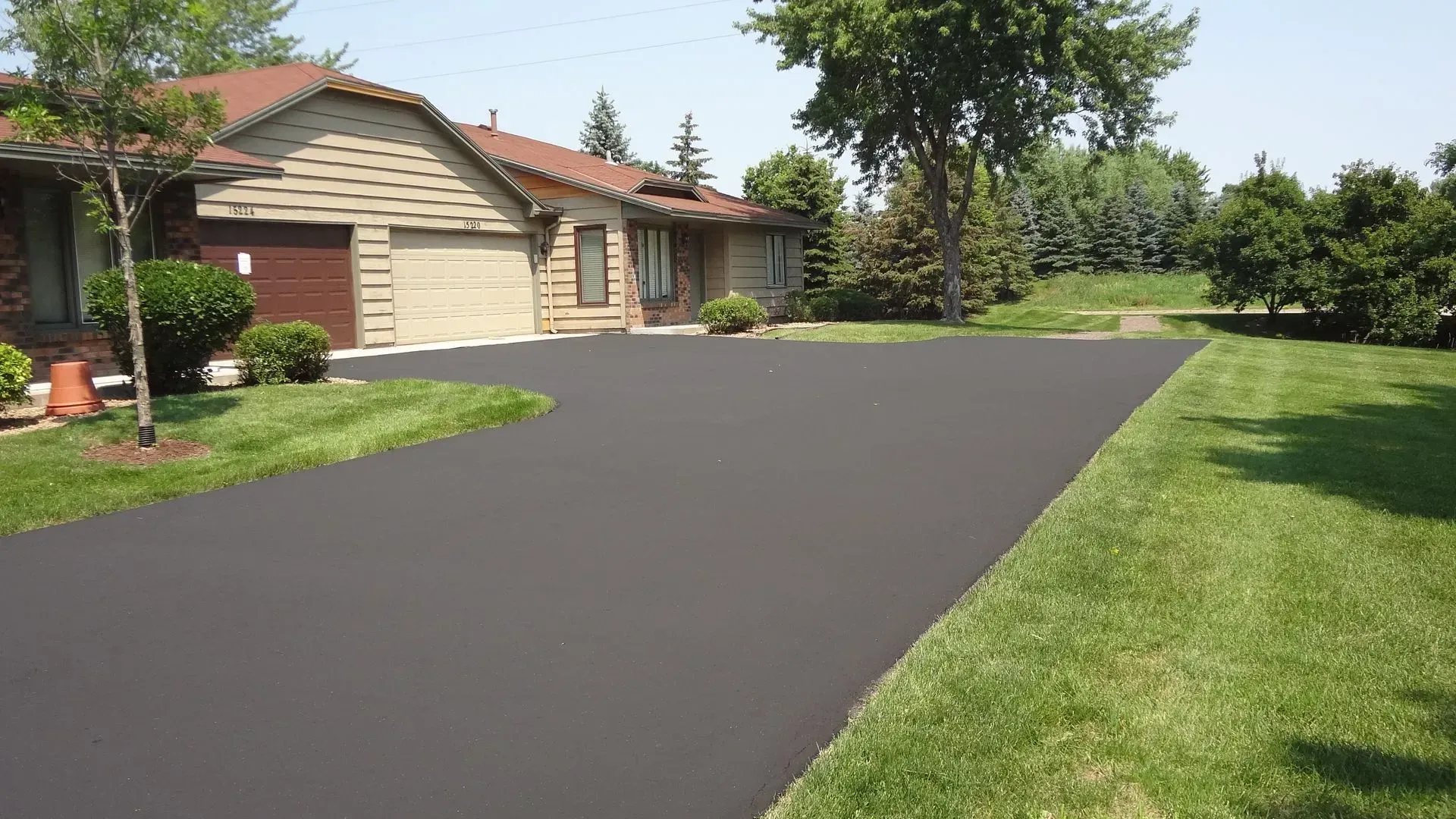Driveways & New Construction:
Asphalt driveways provide a smooth, durable surface that withstands harsh weather conditions. New construction involves excavation, grading, and laying a solid base before applying asphalt. Proper drainage and compaction ensure longevity.
Patching & Repairs:
Cracks and potholes can lead to further deterioration if left untreated. Repair methods include crack sealing, infrared patching, and full-depth patching to restore the surface and prevent water infiltration.
Sport Courts:
Asphalt is commonly used for tennis, basketball, and pickleball courts due to its flexibility and shock absorption. Specialized coatings and striping ensure a safe and professional playing surface.
Asphalt FAQ
Are Tire Marks on Asphalt Normal?
Yes, it is common to see tire marks on asphalt surfaces, particularly during the first year as the material fully cures. These marks are not a sign of improper installation and generally fade over time.
Repair vs. Replacement: What is the Best Choice?
Deciding between resurfacing and full replacement depends on several factors, including the age and condition of the asphalt:
- Age of the Surface: If the asphalt is approaching the end of its lifespan (20–30 years), replacement is often more cost-effective than frequent repairs.
- Extent of Damage: Widespread cracking, sinking, or structural failures indicate that resurfacing may no longer be sufficient.
- Cost Considerations: While repairs may seem more affordable short-term, persistent patching can lead to higher costs over time compared to installing a new surface.
- Traffic Volume: High-traffic areas may benefit more from full replacement, as repairs may wear down quickly.
For minor cracks and surface deterioration, professional resurfacing may extend the life of your asphalt, but severe structural issues often require full replacement.
The Impact of a Worn-Out Driveway on Curb Appeal
A deteriorating driveway can negatively affect the aesthetics of your property. Cracked, faded, and crumbling asphalt creates an unkempt appearance that may deter potential buyers or customers.
Investing in a new surface enhances curb appeal, improves first impressions, and demonstrates responsible property maintenance. Business owners may also notice increased customer trust and satisfaction when their parking lots are well-kept.
Limitations of DIY Asphalt Repairs
Temporary patching materials provide a short-term solution for minor cracks and potholes but lack the durability of professional repairs:
- DIY patches do not bond completely with existing asphalt, allowing moisture infiltration that worsens damage over time.
- Water penetration leads to freeze-thaw cycles that cause cracks to expand.
- DIY repairs may only last 1–3 years, whereas professional repairs can extend surface longevity by 5–10 years.
When damage persists, replacing the surface ensures lasting quality and minimizes long-term maintenance costs.
Common Pavement Issues to Address Promptly
Neglecting small asphalt problems can lead to larger, more expensive repairs. Keep an eye out for these common issues:
- Raveling: Loose stones and deteriorating asphalt indicate that the binder has become brittle, leading to surface erosion. Sealcoating can prevent further deterioration.
- Cracking: Variations in temperature and moisture infiltration cause asphalt to crack, compromising the base layer. Regular crack sealing and drainage improvements can help mitigate this issue.
- Alligatoring: A network of small cracks resembling alligator skin usually signals subgrade failure due to moisture damage. Addressing water drainage and reinforcing the base layer can prevent worsening structural issues.
- Potholes: Often caused by weak subgrades or unattended cracking, potholes worsen over time if not addressed quickly. Proper compaction, crack sealing, and resurfacing help prevent future pothole formation.
Routine maintenance helps prevent these problems and extends the lifespan of your pavement.
If you see lots of loose stones and bits of asphalt on top of your pavement, it may be raveling.
Raveling is when the asphalt slowly crumbles up into tiny bits, leaving it rough and rocky. Raveling normally happens when the liquid binder that holds asphalt together becomes brittle. Then, the asphalt is more prone to breaking, and the weight of traffic crumbles it up little by little.
Expected Lifespan of Asphalt Surfaces
A properly installed asphalt driveway or parking lot can last 30 years or more, with regular preventative maintenance extending its longevity to 40–50 years. To maximize lifespan:
- Ensure proper drainage to prevent moisture-related damage.
- Perform timely crack and pothole repairs to minimize expansion.
Different climates impact asphalt longevity, with extreme temperature fluctuations requiring additional protective measures.
Appearance of Newly Installed Asphalt
Freshly laid asphalt appears deep black and may show slight roller marks or hand-finishing details. Over time, the surface blends and develops a uniform, smooth appearance with regular use.
Timeline for Repaving Projects
Repaving timelines vary based on project size and site accessibility:
- Residential Driveway: Typically, 1–3 days, including preparation and paving.
- Small Parking Lot: 4–7 days, depending on surface size.
- Large Commercial Lot: 1–2 weeks, with phased installation for minimal disruption.
Business parking lots may require partial closures to maintain operations. Project managers coordinate schedules to meet customer needs while ensuring high-quality results.
Preventing Driveway Edge Cracking
Driveway edges—or shoulders—are prone to cracking under excessive weight. To prevent breakage:
- Maintain a beveled edge at a 45° angle to diffuse pressure.
- Avoid driving or placing heavy equipment near edges.
- Install topsoil or landscaping along the perimeter to reinforce structural integrity.
Proactive reinforcement helps prevent costly repairs and ensures a longer-lasting driveway.



